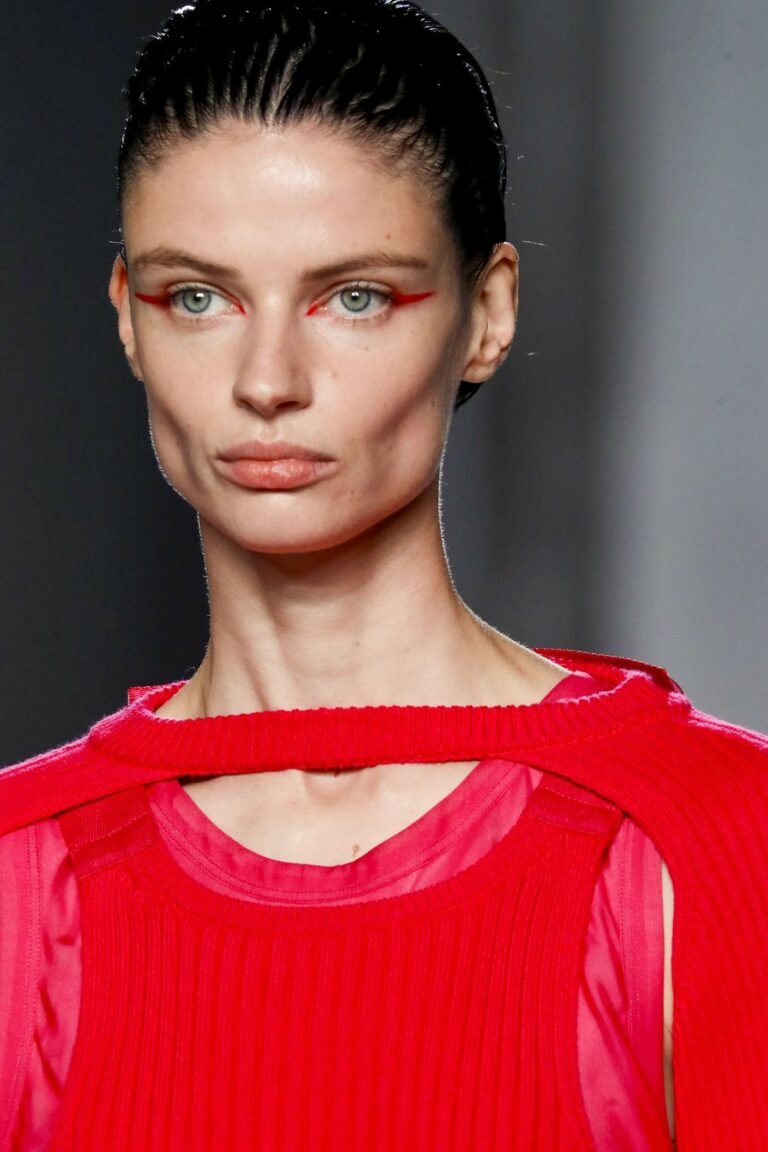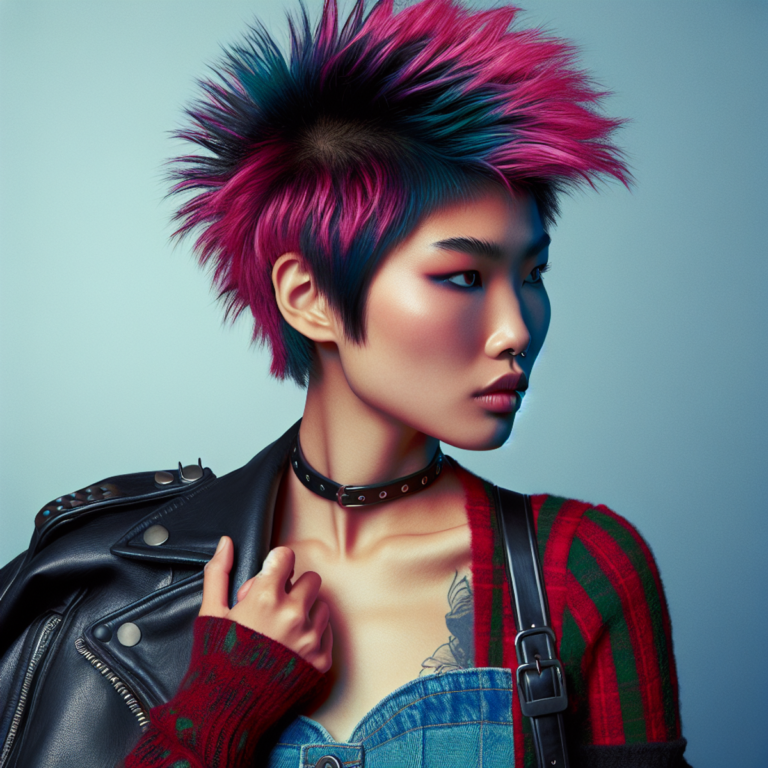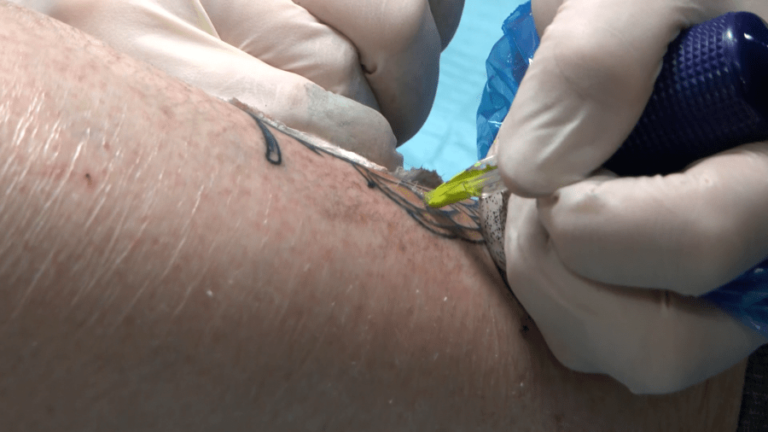How to Choose a Cover Up Tattoo (Everything You Need to Know)

Introduction
A cover up tattoo is a strategic solution for concealing an existing tattoo that may no longer align with your personal style or values. People choose cover up tattoos instead of removal for various reasons, such as preserving the skin’s integrity or transforming a negative experience into a positive one.
Key Takeaway: In this article, we will guide you on how to choose the perfect cover up tattoo. You will learn about the important factors to consider, from assessing the original tattoo to selecting the right design and artist. We will also discuss the role of laser tattoo removal in conjunction with cover ups, as well as color considerations and techniques for a successful cover up.
Choosing a cover up tattoo involves careful evaluation and deliberate decision-making. By understanding the key aspects involved in this transformative journey, you can confidently embark on the path towards a meaningful and visually appealing cover up tattoo.
1. Assessing Your Original Tattoo
When choosing a cover up tattoo, it’s important to start by thoroughly assessing your original tattoo. This will help you understand its key characteristics and how they can influence the design and effectiveness of the cover up. Here are some important points to consider during this assessment:
- Size: Take note of the size of your current tattoo. A larger tattoo may offer more options for cover up designs, allowing for greater creativity and flexibility. However, a smaller tattoo may limit the possibilities, especially if you want to completely hide the original ink.
- Shape: Examine the shape of your tattoo and how it fits on your body. Certain shapes may work well for cover ups, while others may make it challenging to find a suitable design that can effectively hide or transform the original tattoo.
- Colors: Pay attention to the colors used in your existing tattoo. Bright and dark colors can be harder to cover up compared to lighter or faded colors. It’s important to think about how these colors will interact with the new design and whether additional techniques, like laser tattoo removal, might be needed to lighten or fade the original ink.
- Placement: Consider where your current tattoo is located on your body. The placement can affect both the design choices and the overall success of the cover up. For example, tattoos on areas with thinner skin or more movement (such as fingers or wrists) may need extra care to ensure they last long and heal properly.
- Design elements: Look closely at any specific design elements in your original tattoo that you might want to include or hide in the cover up. Things like lettering, symbols, or particular images can be incorporated into a new design or strategically covered depending on your preferences.
By thoroughly assessing these characteristics of your original tattoo, you’ll have a better understanding of its limitations and potential challenges for a cover up. This will help you make informed decisions when choosing a design and working with an artist to get the desired outcome.
It’s important to remember that each tattoo is unique, and the assessment process may vary depending on individual circumstances. Seeking advice from a professional tattoo artist who specializes in cover ups can also be really helpful, as they’ll have the experience and knowledge to provide insights and recommendations based on your specific situation. Additionally, if you do decide to explore laser tattoo removal as part of the cover-up process, it’s crucial to understand the process and what to expect from consultation to recovery.
2. Key Considerations for Choosing a Cover Up Design
When you’re choosing a cover up design, it’s important to think about how the style and elements of the new tattoo can hide or change the old one. Here are some things to keep in mind:
Concealing or Transforming
The new design should be made in a way that either completely hides the existing tattoo or turns it into something completely different. This choice depends on what you prefer and how much you want the old tattoo to show in the new design.
Meaningful Symbolism vs. Concealment
While it’s great for the cover up tattoo to have personal meaning, like representing growth or change, it’s also really important for it to effectively hide the original tattoo. Finding a balance between these two things makes sure that the new tattoo looks good and also does its main job of hiding the old ink.
Adaptation of Design Elements
Things like size, color, and placement of the new design are very important in deciding how well it covers up the existing tattoo. For example, detailed patterns or dark colors could be used to hide an old tattoo, while adding in nature elements or abstract shapes can change the previous ink into a new artistic idea.
By thinking about these key points when choosing a cover up design, you can work towards getting a successful change that matches your personal style and likes while also hiding the original tattoo well.
3. Selecting the Right Artist for Your Cover Up Tattoo
When it comes to getting a cover up tattoo, selecting the right artist is crucial. You want to find someone who has expertise in both cover up work and specific styles. Here are some key considerations to keep in mind when choosing an artist for your cover up tattoo:
- Experience with cover ups: Look for an artist who has experience specifically in cover up tattoos. Covering up an existing tattoo requires a unique set of skills and techniques. An experienced artist will understand the challenges involved and will be able to come up with creative solutions to successfully hide or transform the old tattoo.
- Review portfolios: Take the time to review the portfolios of different artists. Look for examples of their cover up work specifically. Pay attention to their ability to effectively hide or transform old tattoos. This will give you a good idea of their skill level and whether their style aligns with what you’re looking for.
- Client testimonials: Don’t hesitate to ask for client testimonials or references from previous cover up clients. Hearing about other people’s experiences can give you valuable insights into an artist’s professionalism, communication skills, and ability to deliver successful cover ups.
- Consultation: Schedule a consultation with potential artists before making a decision. This will give you the opportunity to discuss your ideas, concerns, and expectations directly with them. Pay attention to how well they listen and understand your vision. A good artist should be able to provide guidance and suggestions based on their expertise. If you’re unsure about how to approach this, here is a helpful guide on how to email a tattoo artist.
- Communication: Communication is key when working with an artist on a cover up tattoo. Make sure you feel comfortable discussing your ideas and asking questions. The artist should be open to your input and willing to collaborate with you to achieve the desired result.
Remember, choosing the right artist for your cover up tattoo is essential for a successful outcome. Take your time to research and consider different options before making a decision. For more information on cover up tattoos, you can also check out this insightful blog post.
4. The Role of Laser Tattoo Removal in Enhancing Cover Up Options
Laser tattoo removal can play a crucial role in enhancing the options for cover up tattoos, providing a valuable solution for those looking to transform or conceal existing ink. Here are the key points to consider:
1. Expanding Design Possibilities
Laser sessions are effective in lightening the intensity and fading the colors of the original tattoo. By doing so, it creates a more neutral canvas, allowing for a wider range of cover up design options. This process significantly broadens the scope of what can be achieved in the new tattoo, enabling intricate and detailed designs that may not have been feasible without laser tattoo removal.
2. Consulting with Experts
It is essential to consult with a professional tattoo removal specialist before undergoing any laser treatment. These specialists, who you can find by searching on platforms like Indeed, can assess the current tattoo and provide expert advice on the number of sessions required to achieve the desired level of fading. Additionally, they can offer insights into realistic expectations and potential outcomes based on the specific characteristics of the original tattoo.
3. Preparing for Laser Tattoo Removal
Preparing for laser tattoo removal is an important step towards achieving optimal results. This involves following certain guidelines such as protecting your skin from sun exposure, avoiding certain medications, and staying hydrated. By adequately preparing for laser sessions, individuals can maximize their chances of success and minimize potential complications.
By understanding the impact of laser tattoo removal on cover up options and following these guidelines, individuals can make informed decisions about their tattoo transformation journey. This approach ensures that the cover up process is approached with thorough consideration and a clear understanding of how laser treatment can enhance the final result.
5. Navigating Color Considerations in Cover Up Tattoos
When choosing a cover up tattoo, it’s important to think about colors carefully. The right colors can effectively hide the old tattoo and seamlessly blend with the new design. Here are some key things to remember when considering colors for cover up tattoos:
1. Popular Color Palettes
- Blues: These are often used to cover up black ink tattoos. The dark tones of blue can effectively hide the intensity of black pigments and provide a solid base for the new design.
- Browns: Browns are commonly used when blending with earth tones in the original tattoo. They help create a sense of unity between the old and new elements, making the cover up look cohesive.
- Other Colors: Depending on the specific colors in your original tattoo, your artist may suggest different color combinations that would work best for your situation.
2. Working with Your Chosen Artist
- Consultation: It’s crucial to have an open conversation with your chosen artist about the colors in your original tattoo and what you want for the cover up design. This will help them understand the best approach and give you informed advice.
- Trusting Their Expertise: Your artist knows best when it comes to blending colors. They have experience working with different pigments and can guide you on how certain colors may interact or blend with existing ones.
- Customization: Your artist might recommend adjusting the colors of your cover up tattoo to ensure it provides optimal coverage and blends well with the old tattoo. They’ll take into account factors like your skin tone, how saturated the existing tattoo is, and what final result you’re aiming for.
By working closely with your chosen artist, you can make sure that color considerations are carefully thought out throughout the cover up process. Their knowledge and expertise will be invaluable in creating a cover up tattoo that effectively hides the old ink.
Remember, each cover up tattoo is unique, and color considerations may vary depending on individual circumstances. Trust in your artist’s guidance, and together, you can create a design that not only covers the old tattoo but also transforms it into a beautiful work of art.
Techniques for Blending, Shading, and Enhancing Cover Up Tattoos
When it comes to cover up tattoos, blending colors, shading, and adding intricate detailing are essential techniques that can make a significant difference in the overall outcome. These techniques play a crucial role in creating dimension, depth, and visual interest in the new design while diverting attention from the previous tattoo. Here are some key points to consider:
1. Advanced Shading Techniques
One of the most effective ways to achieve a successful cover up is through advanced shading techniques such as color packing and dotwork. These techniques allow the artist to create smooth transitions between colors and tones, helping to blend the old tattoo seamlessly into the new design. By strategically placing shades of different intensity and using dotwork to add texture and depth, the artist can effectively camouflage the original tattoo.
2. Adding Sufficient Detail
Detailing is another crucial aspect when it comes to cover up tattoos. By incorporating intricate details into the design, the artist can divert attention away from the previous tattoo. This can be achieved through various techniques such as fine linework, stippling, or even hyperrealism. The key is to strike a balance between adding enough detail to draw focus away from the old tattoo without overwhelming the overall composition.
3. Enhancing with Additional Elements
In some cases, enhancing the cover up tattoo with additional elements can further improve its effectiveness. For example, if there are areas in the original tattoo that are difficult to conceal completely, an experienced artist may suggest incorporating elements such as flowers, foliage, or geometric patterns around those areas to create distractions and minimize their visibility.
4. Collaboration with Your Chosen Artist
To ensure a successful cover up tattoo that incorporates these techniques effectively, open communication and collaboration with your chosen artist are crucial. Discuss your expectations and desired outcome openly so that they can tailor their approach accordingly. Additionally, providing reference images of styles or designs you find appealing can help guide the artist in creating a cover up that aligns with your vision.
Remember, cover up tattoos require a skilled artist who understands the intricacies of blending colors, shading techniques, and detailing. Be sure to review portfolios and client testimonials to assess an artist’s proficiency in executing successful cover ups.
By utilizing advanced shading techniques, adding sufficient detail, and collaborating closely with your chosen artist, you can achieve a well-executed cover up tattoo that transforms your old ink into a beautiful new piece of art. Embrace the potential for self-expression and transformation that cover up tattoos offer, and enjoy the fresh start they provide.
Embracing a Fresh Start: The Beauty of Well-Executed Cover Up Tattoos
Embrace the potential for transformation and self-expression that cover up tattoos offer.
Cover up tattoos have the ability to completely transform an existing tattoo into something new and beautiful. They provide an opportunity for individuals to express themselves and create a fresh start. Here are some inspiring examples of successful cover up projects:
- From Faded to Fabulous: Sarah had a faded tribal tattoo on her upper arm that she no longer resonated with. She worked with a talented artist who incorporated elements of nature and transformed it into a stunning floral design.
- Turning Regret into Resilience: Mark had a poorly done portrait tattoo that reminded him of a past relationship. He decided to cover it up with an intricate geometric pattern, symbolizing his journey towards self-discovery and resilience.
- Honoring Heritage: Maria had a name tattooed on her wrist that she wanted to remove. Instead, she opted for a cover up that celebrated her cultural heritage by incorporating traditional symbols and colors.
These examples demonstrate how individuals have turned old, unwanted tattoos into beautiful works of art through creativity and collaboration with skilled tattoo artists.
Thorough research, careful planning, and open communication with your chosen artist are crucial for achieving a desirable cover up result.
If you’re considering getting a cover up tattoo, here are some essential steps to ensure a successful outcome:
- Research: Take the time to explore different styles, designs, and artists who specialize in cover up tattoos. Look for portfolios that showcase their ability to transform existing tattoos.
- Planning: Once you’ve found an artist whose work resonates with you, schedule a consultation to discuss your ideas and expectations. Bring reference images, discuss any concerns or limitations related to your existing tattoo, and be open to their professional advice.
- Collaboration: During the design process, collaborate closely with your chosen artist to ensure that your vision aligns with their expertise and creative ability. Trust their suggestions on color palettes, placement, and techniques that will effectively cover up the old tattoo.
- Patience: Depending on the size, complexity, and location of your existing tattoo, multiple sessions may be required to complete the cover up. Be patient throughout the process and follow your artist’s aftercare instructions for optimal healing.
By following these steps and establishing a strong partnership with your tattoo artist, you can increase the likelihood of achieving a desirable cover up result.
Remember, a well-executed cover up tattoo has the power to not only conceal the past but also to celebrate a new beginning. It’s a testament to your personal growth and willingness to embrace change. By choosing the right design, artist, and approach, you can transform something old into something truly remarkable.










